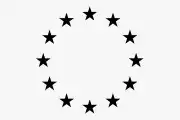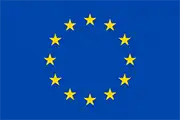Innogy
An application that enables electronic meter reading without replacing it with an IoT model.
Challenge
Every day, electricity company technicians visit customers in their homes, apartments and businesses and take down the meters for electricity, gas, heat and water. A very large number of meters is already read remotely from IoT devices, but despite the available technology, there are still many meters which are read manually by technicians in the traditional way.
Therefore, for one of the largest energy companies in Europe we have developed an application which was supposed to make life easier for millions of people. Allowing to read the meter electronically without having to replace it with the IoT model. Thanks to this application, it was not necessary to spend millions of zlotys on meter replacements.
A customer with the Innogy mobile app, activates the internal camera in his smartphone or tablet and "takes a picture" of the meter. Using OCR (Optical Character Recognition), the app reads the sequence of numbers on the meter and adds the meter value to the logged-in customer. Without the need for a technician or meter replacement. The algorithm that reads the counter has been "trained" using Machine Learning.
Solution
The goal of the project was to tailor the technology to Innogy's specific needs. The energy company aimed to provide real meter readings without the need for a huge number of technicians. Unfortunately, still in many homes, meters are located inside apartments or houses, and at the time of COVID-19, visiting customers was not advisable. There would be a huge cost to replace the meters with IoT meters that would send reports to the cloud at a frequency of every 15 minutes.
The biggest challenge of the project was teaching the algorithm to recognize characters using Machine Learning. And it wasn't about Machine Learning alone. After all, over the years, there have been more than 40 "standard" electricity meters in use. Some use mechanical clocks to read the digits, some use digital meters. Some use a radio transmitter. It took some learning (machine and human) to find a suitable solution and an integrated database.
The application solves basically 2 customer problems.
- Hiring problem - it's not a well-known fact that for the simplest jobs there is a shortage of people willing to do them. The application shifted the burden of "listing" meters from technicians to customers. Customers, on the other hand, gained real readings at a clearly defined time, without delays and forecasts
- As the utility was understaffed, meters were not being read regularly. The solution was to replace the meters with remotely readable IoT meters. However, the concurrent cost of replacing the meters would have been prohibitively expensive and would have required interference with the customers' home infrastructure. The mobile application eliminated the need for meter replacement and shifted the responsibility of meter reading to the customers.
The work process for the mobile application began with estimating the number of data points needed to create a valuable solution for the application core based on Machine Learning. The algorithm, in order to be accurate and effective, had to undergo extensive "training" so that it could recognize signs almost flawlessly, especially in low-light conditions or when using older smartphone models. The expansion of the system was also included in the process. A roadmap was drawn up to ensure the development of the application using continuous integration and continuous development. At this stage, the architecture of the whole project was also created.
Tests of the application created for both iOS and Android systems were carried out on various devices. It was very important to conduct tests in conditions that would simulate natural conditions like:
- difficult access to the meters,
- low light conditions,
- no access to the boxes and the need to take pictures through scratched or dirty glass,
- older smartphone models.
After testing and "training" the algorithm, the application accurately recognized the signs almost 100% of the time. Cases in which the algorithm was not able to read the state of the counter, the eye of a skilled technician was also not able to do so.
We can divide the whole work carried out into three stages:
- Workshops: Before starting the project, we conducted a workshop in which we created a list of functional requirements (FRD), in response to the business requirements (BRD). At this stage, we also defined the scope of the system architecture (TRD). In this way, we aligned the scope of requirements with the client's needs. We better understood the objectives and found a way to achieve them.
- Development Phase: The UX design and the underlying graphic design of the application correspond to the client's visual identity. We took care of the legibility of the content in the application.
Implementation and integration with the client's systems: Thanks to the analysis during the workshop, we got to know the details of the systems used by the client. The detailed description of the application architecture helped us to efficiently implement and integrate it with systems outside the product.
We implemented the project in:
- Keras
- OpenCV
- Tesseract
Effects
The application for the energy company Innogy introduced a number of improvements for both the company and the end customer.
The company, gained savings related to the replacement of meters for new ones and related to salaries for technicians. The use of machine learning algorithms saved thousands of working hours. The customers gained a tool which allowed them to add the meter themselves, without the need for a technician visit. They also gained security, which for many in the covid era is crucial.
They delivered a high quality website that exceeded expectations. Their responsive and professional team met the requirements in a very short time.
See more
IoT Application
The application allows you to track the position of technicians who are supposed to visit a list of points designated by managers at a given time.
Retail Machine Learning
An innovative solution for temperature reading on cooling equipment using Machine Learning.
Mobile app for Flugger Polska
The Fiona Wall Design® allows customers visiting Flugger's trade show stands to easily match colors to Fiona wallpaper designs.


